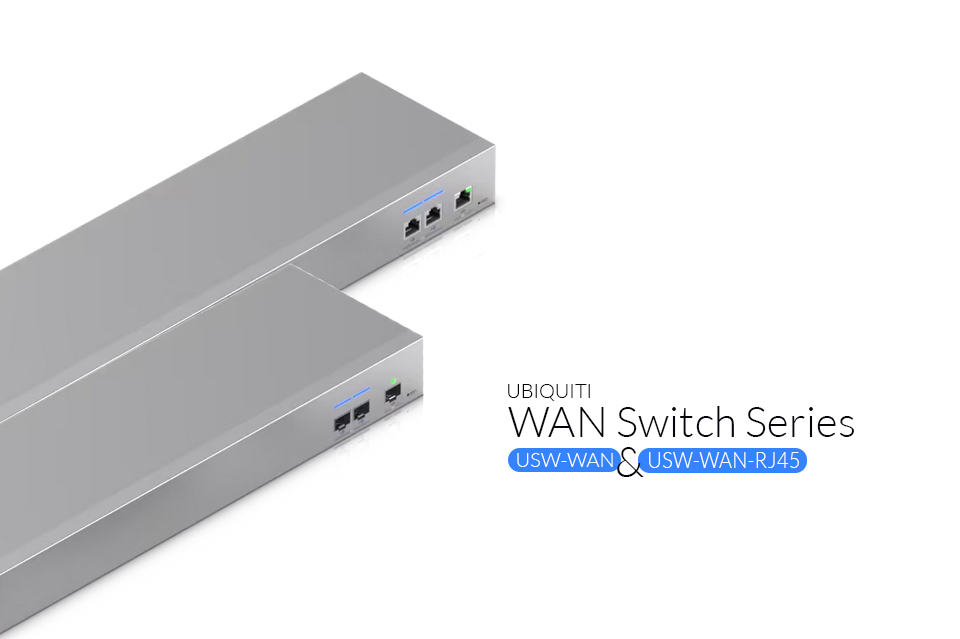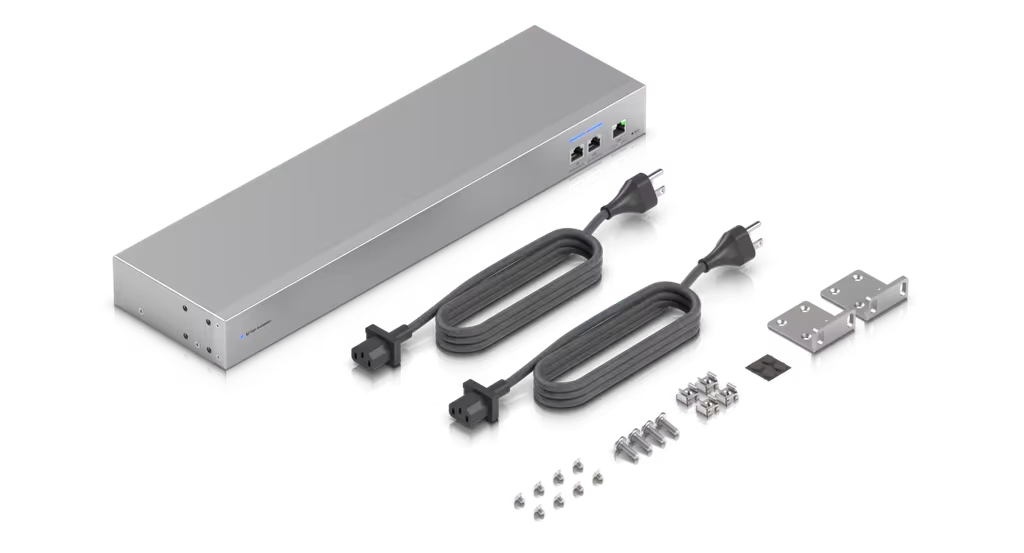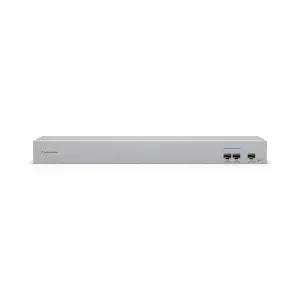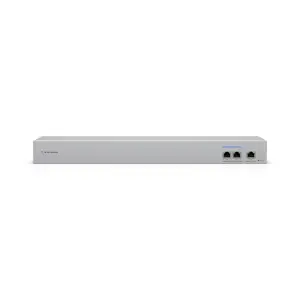
If you want high availability and reliable gateway switching in your network environment, the new WAN switches from Ubiquiti are a must: the UniFi USW-WAN and the USW-WAN-RJ45. Both devices are specially designed to efficiently support the Shadow Mode of UniFi gateways – this means that one gateway automatically takes over if the other fails. But which of the two switches is right for you? This article will give you a technical overview and help you decide for your infrastructure.
What is a WAN switch?
A classic switch usually connects internal network elements with each other – such as clients, servers and access points. A WAN switch, on the other hand, handles the switching in the area between your gateways (e.g. UniFi Dream Machines, UXG or UDM Pro) and the Internet access. The highlight of Ubiquiti WAN switches is that they allow multiple gateways to share the same Internet access and take over seamlessly in the event of a failover.
USW-WAN – the fiber optic specialist
The USW-WAN is ideal for setups with SFP+ infrastructure. It has:
- 3x 10G SFP+ ports, compatible with 1G and 10G modules
- 1x 1G RJ45 port for management access
- Power consumption: max. 13 watts
- Standard rack size (1U), therefore easily rackable
If you already use fiber optic connections or want to rely on a fast and interference-free infrastructure based on SFP+ in the future, the USW-WAN is the right choice. With the right modules, you can guarantee high speeds and low latency – especially in combination with other enterprise components from the UniFi ecosystem.
USW-WAN-RJ45 – Copper-based flexibility
In contrast, the USW-WAN-RJ45 relies on classic RJ45 ports, i.e. copper cabling. Its features:
- 3x 10G RJ45 ports, backwards compatible to 5G, 2.5G, 1G, 100M
- 1x 1G RJ45 port for management
- Power consumption: max. 18 watts
- Also rackable (1U)
If your existing infrastructure is based on copper or you want to keep the simplicity and cost efficiency of RJ45, then the RJ45 WAN switch is the better choice. You don’t need SFP+ modules or adapters, but can work directly with standard network cables.

Application scenarios
Both switches are designed for operation with UniFi gateways in high availability mode. This is a configuration in which a second gateway remains active in “Shadow Mode”, but only takes over if the primary device fails.
A typical scenario could look like this:
- Internet arrives via a provider connection.
- The WAN switch distributes access to two gateways.
- Gateway A is active, Gateway B is waiting in the background.
- If gateway A fails, gateway B takes over automatically – without manual intervention.
The WAN switch saves you manual reconnection or expensive load balancer hardware.
Our conclusion – which one is right for you?
- Reach for the USW-WAN if you:
- relies on fiber optics (SFP+)
- need maximum performance with minimum latency
- are familiar with SFP+ modules
- Reach for the USW-WAN-RJ45 if you:
- operate a copper infrastructure
- prefer to work with standard RJ45
- want a simple plug-and-play solution
Both devices can be conveniently managed via the UniFi Controller, provide you with clear monitoring data and integrate seamlessly into your existing UniFi network. UI Care can also be added to both devices.
If you want to take your network to the next level – especially in terms of redundancy and availability – these WAN switches are a strong building block. Simply choose according to your cabling – glass or copper – and your UniFi Gateway HA setup is ready to go.
USW-WAN

WAN Switch – 10G SFP+ WAN switch connecting two high-availability UniFi gateways in shadow mode to a single ISP
USW-WAN-RJ45

WAN Switch RJ45 – 10 GbE WAN switch connecting two Shadow Mode High Availability UniFi Gateways to a single ISP

